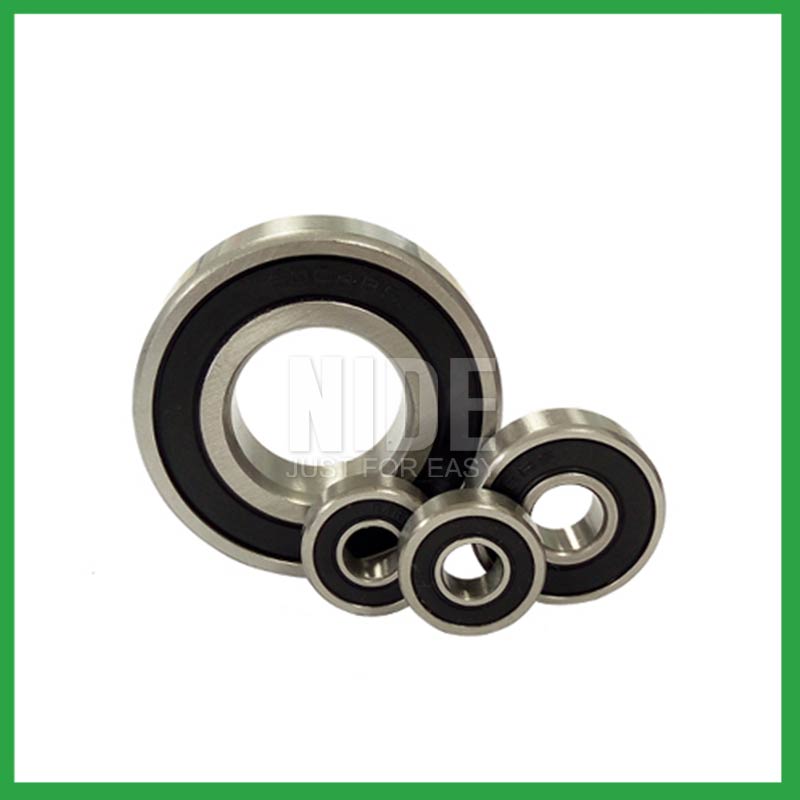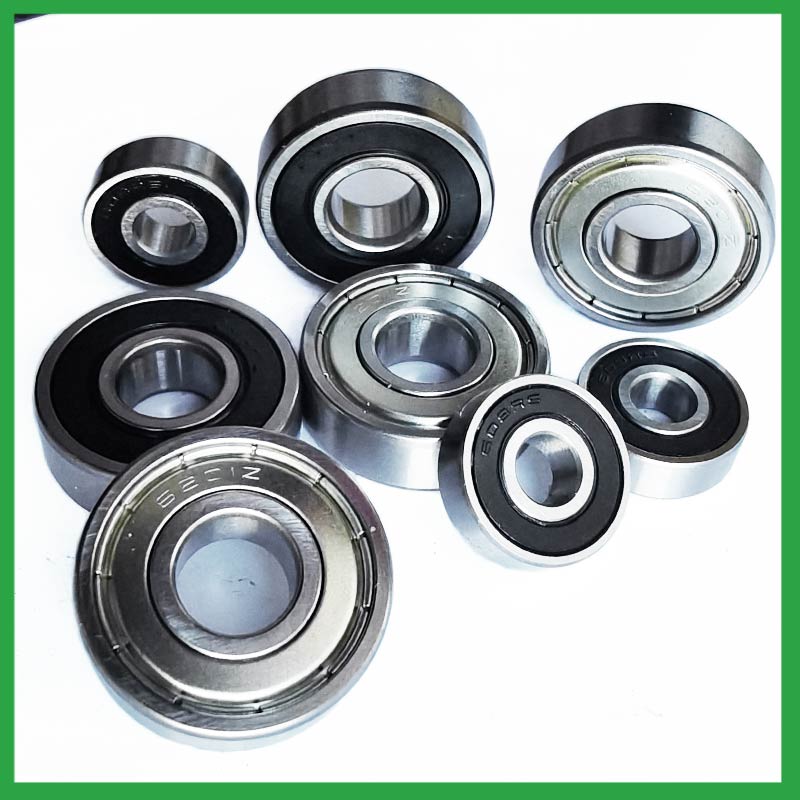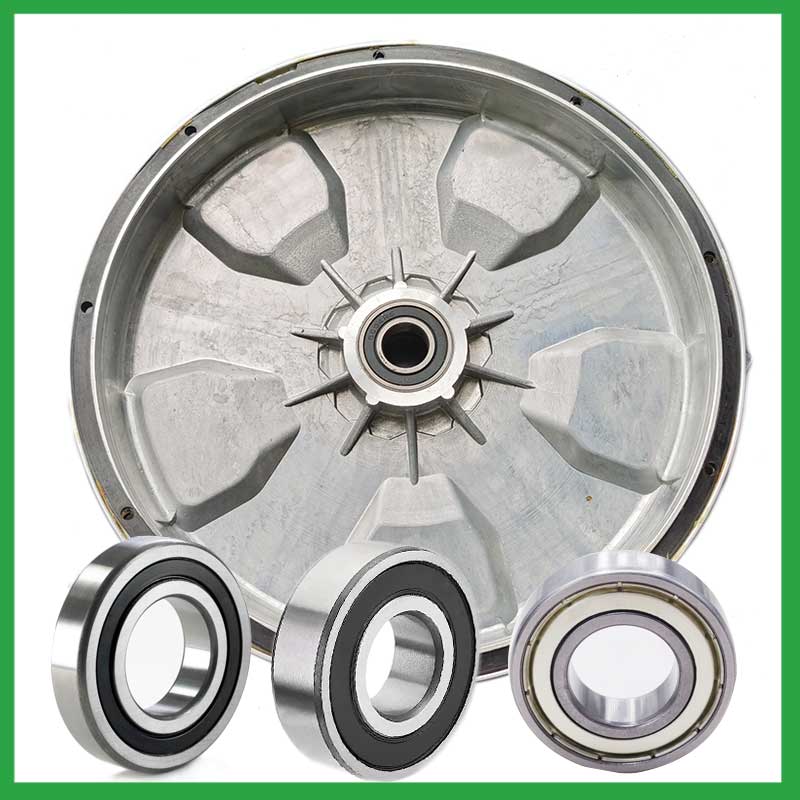PRODUCTS
CONTACT US
Ningbo Nide International Co., Ltd.
一一
· Contact person:Jack Zeng
· Mob/Whatspp/WeChat:0086-13738869026
· Email:emarketing@nide-group.com;marketing4@nide-group.com
· Add:No. 169, Wohushan Road, Daqi Subdistrict, Beilun District, Ningbo, China

Nide team could manufacture ball bearing as per customer’s drawing and samples.
If customer only has samples, we could also design drawing fo r our customer.
We also provide customized service.
Our ball bearing is widely applied the different industrials.
Ningbo Haishu Nide International Co., Ltd is located in the beautiful sea shore city--Ningbo, taking the advantage of advanced industries hub, perfect supply chain and convenient transportation, and integrating professional team with rich motor manufacturing experience , we focus on supplying the Motor Components One Stop Sourcing Platform to our customers.
Our products include motor cover and lamination,fan,commutator,insulation paper,magnet,thermal protector,ball bearing,etc.Apart from these products, we also provide the service for the motor manufacturing technical consultant, project support and turn-key project.

| Parameter | Information |
|---|---|
| Product Name | recirculating linear ball bearing |
| Brand Name | NIDE |
| Place of Origin | Ningbo,Zhejiang |
| Material | ceramics, etc. |
| Structure | Deep Groove |
| Color | Customized Color |
| Delivery Time | 5-7days |
| Port | Ningbo/Shanghai |
| Export region | Oceania,America,Europe |
| Export Country | India,Brazil,South Korea,Swaziland,Uganda,Macedonia,Maldives...etc |
| Application | high-speed electric tools, etc. |
| OEM/ODM | Yes |
| Size | Customized size |
| Stock | In Stock |
| Feature | High precision,Low Noise...etc |
| MOQ | 10 pieeces(Specific according to the model) |
| Certification | ISO9001,CE-stator coil winding inserting machine,CE-stator coil lacing machine,etc |
| Supply Ability | 100000-500000 Piece/Pieces per Month |
| Lubricate | Oil Grease |
| Packaging Details | Suitable for sea transportation |
| Lead time (days) | 15-20 (To be negotiated) |
Please note: The above table data is for reference only. For specific information, please contact us.
recirculating linear ball bearing require thrust for installation, which can be achieved by using a combination ring made of steel sleeve and transmission rubber, or by using an adjustment plate to tighten the bolt to form a combination ring installation structure.
During the disassembly process, the outer shell should be kept intact to avoid unnecessary damage;
When replacing installation components, attention should be paid to the accuracy of the support components to prevent deformation;
During the disassembly process, attention should be paid to protecting the surface quality of the ball bearing to ensure its performance;
During the operation, attention should be paid to removing surface dust to ensure the quality of the ball bearing.
Ball bearings have many advantages, making them highly competitive in the market.
Firstly, they are very durable and have good wear performance, making their service life longer than many other types of bearings.
Secondly, they are easy to install and can provide low friction performance in various applications.
Thirdly, they require a relatively low level of maintenance, making them cost-effective.
In addition, compared to many other types of bearings, their purchase cost is relatively low, making them an economical choice.




recirculating linear ball bearing---FAQs Guide
2.Can recirculating linear ball bearing handle shock loads and high-impact conditions in heavy machinery?
3.Are there recirculating linear ball bearing designed for use in critical medical equipment?
4.Can recirculating linear ball bearing operate in high-speed applications, and what design features make them suitable for such conditions?
5.How do recirculating linear ball bearing contribute to the overall efficiency and energy savings in industrial machinery and transportation systems?
6.How do manufacturers address concerns related to bearing noise and vibration in sensitive equipment?
7.Are there self-aligning recirculating linear ball bearing that accommodate misalignment and shaft deflection in rotating equipment?
8.As a recirculating linear ball bearing manufacturer,Your product certifications?
9.What is the typical noise level associated with recirculating linear ball bearing, and how are noise-reduction techniques applied?
10.What are the advancements and innovations in recirculating linear ball bearing technology that have emerged in recent years?
11.Are there ongoing research and development efforts aimed at improving recirculating linear ball bearing materials, designs, and lubrication techniques?
12.As a recirculating linear ball bearing manufacturer,What is your payment method?
13.Where can recirculating linear ball bearing be used?
14.As a recirculating linear ball bearing manufacturer,can you supply samples?
1.What maintenance practices are recommended to extend the lifespan of recirculating linear ball bearing and prevent premature failure?
Proper handling and installation of recirculating linear ball bearing is essential to preventing premature failure. Ensure that bearings are stored and transported in a clean, dry, and vibration-free environment. During installation, ensure that bearings are properly aligned, and torque is applied correctly.
2.Can recirculating linear ball bearing handle shock loads and high-impact conditions in heavy machinery?
As a general rule, recirculating linear ball bearing are used at higher speeds and lighter loads than are roller bearings. Roller bearings perform better under shock and impact loading. Ball bearings tolerate misalignment better than roller bearings do. Roller bearings can handle heavy combined radial and thrust loads.
3.Are there recirculating linear ball bearing designed for use in critical medical equipment?
Precision recirculating linear ball bearing are among critical components in medical devices that are vital to ensuring patient safety. Correct choice of suitable ball and ring materials and the right product design can ensure high-precision bearings — and medical devices — have a long service life.
Precision bearings are used in a wide variety of medical devices including surgical power tools, ventilators and heart pumps — and patient safety depends on them all. Whatever the device, there is an onus on medical device original equipment manufacturers (OEMs) to ensure that the right type of bearings are chosen, and fit precisely into the application.
4.Can recirculating linear ball bearing operate in high-speed applications, and what design features make them suitable for such conditions?
They have very low rolling friction and are optimized for low noise and low vibration. This makes them ideal for high-speed applications. recirculating linear ball bearing are comparatively easy to install and require minimal maintenance.
5.How do recirculating linear ball bearing contribute to the overall efficiency and energy savings in industrial machinery and transportation systems?
The balls roll along the raceway, allowing for smooth rotation of the machinery or equipment. Ball bearings are used to support rotating, reduce friction and support radial and axial loads in high-load, high-speed applications where reliability and efficiency are critical.

6.How do manufacturers address concerns related to bearing noise and vibration in sensitive equipment?
From a recirculating linear ball bearing manufacturing perspective, a low noise or vibration rating is achieved by paying attention to the surface finish of the raceways and balls, their roundness, and selecting the correct cage design. Finely filtered low noise greases can also be used to reduce vibrations.
7.Are there self-aligning recirculating linear ball bearing that accommodate misalignment and shaft deflection in rotating equipment?
These recirculating linear ball bearing are particularly suitable for applications where misalignment can arise from errors in mounting or shaft deflection. A variety of designs are available with cylindrical and taper bores, with seals and adapter sleeves and extended inner rings.
8.As a recirculating linear ball bearing manufacturer,Your product certifications?
ISO9001:2015 certificate,ISO 9001 Certification,CE-stator,etc.
9.What is the typical noise level associated with recirculating linear ball bearing, and how are noise-reduction techniques applied?
To measure in accurate way the recirculating linear ball bearing noise under rotation during their manufacturing process is a key activity particularly in the production of medium, small and ultra-small deep groove ball bearings. This capability in bearings noise analysis has become the real distinguishing element between a standard bearings noise equipment and a superior class one.
The various types of vibration and sound in rolling bearings can be grouped in four main categories: structural, manufacturing, handling and other. The structural vibration consists mostly of race, click, squeal and cage noise: it can be continuous or intermittent depending on specific cases. The manufacturing vibration is instead related to the waviness noise generated by the geometrical imperfections of inner and outer ring and of rolling elements, being always continuous in nature. The so-called handling vibration is normally associated with flaw and contamination and is generating – in most of the cases – irregular noise. Then there are other types of vibrabition that include noise generated by sealing and lubricant (irregular) or by runout (continuous).
10.What are the advancements and innovations in recirculating linear ball bearing technology that have emerged in recent years?
Significant advancements have been made in recirculating linear ball bearing steels over the years. Modern, ultra-clean bearing steels contain fewer and smaller non-metallic particles, giving ball bearings greater resistance to contact fatigue.

11.Are there ongoing research and development efforts aimed at improving recirculating linear ball bearing materials, designs, and lubrication techniques?
A custom recirculating linear ball bearing can satisfy almost any customer’s needs. Your application may need a needle roller or ball bearing, a radial or angular contact design, a plain carbon steel bearing with anti-corrosion coatings or stainless steel, a thrust bearing or a spherical bearing, tight or loose radial play, sealed or non-sealed designs
12.As a recirculating linear ball bearing manufacturer,What is your payment method?
We accept T/T, PAYPAL or Western Union, credit card or via ALIBABA Assurance order.
13.Where can recirculating linear ball bearing be used?
recirculating linear ball bearing are very versatile. They can be designed to withstand radial loads, axial loads and combined radial/axial loads at various operating speeds. These characteristics, combined with the relative cost and compactness of the design, give it universal appeal within the industry. Ball bearings are widely used in electric motors, gear reducers and pumps. Serving the automotive, home appliances, aerospace, oil and gas drilling, and mining sectors.
14.As a recirculating linear ball bearing manufacturer,can you supply samples?
Sure, samples can be provided free of charge, and the buyer pay the postage of the sample.

